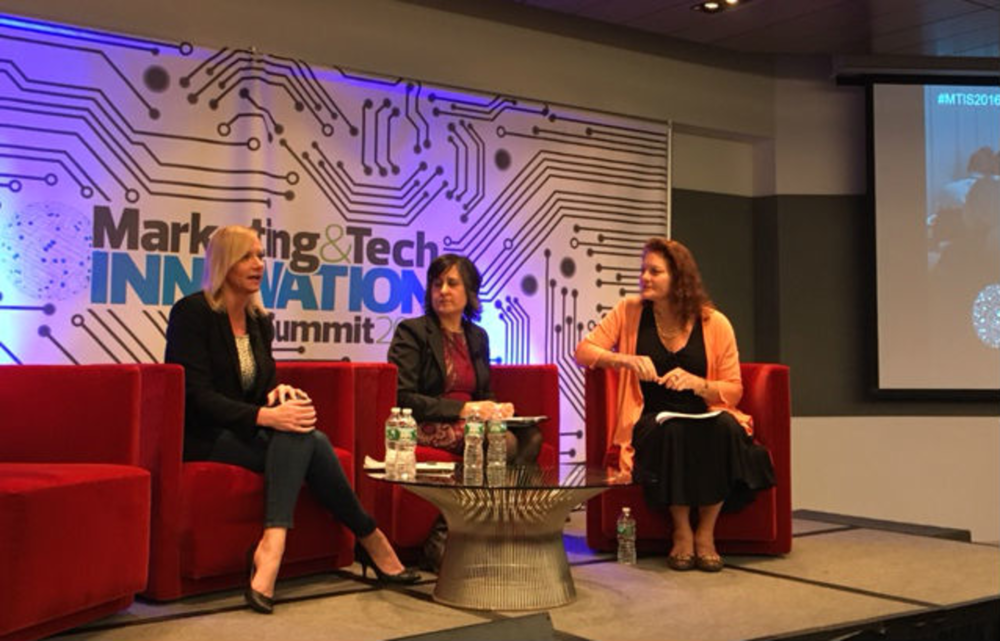If only marketing technology was like a lamp. Plug it in, flip a switch and, voilà, light. In reality, getting the most from marketing tech requires adroitly orchestrating people, processes, and objectives.
So, how can marketers combine these elements to create the ultimate customer experience? To see how today’s leaders are doing it, Stephanie Miller, VP of digital strategy for food business magazine New Food Economy, interviewed marketers from The New York Times and AccuWeather on stage at the 2016 Marketing&Tech Innovation Summit in New York. Here are four takeaways from their discussion.
1. Ensure that everyone shares the same business objectives.
Technology alone won’t help marketers achieve their goals; having the right people and strategies in place is important, too.
Michelle Gudema, director of marketing operations for The New York Times, explained how this is evident at the media organization. Every department there—from reporting to marketing—is focused on the customer and aligned around shared goals. For example, although the Times is a news organization, it’s also a subscription business, Gudema says, and everyone in the company is responsible for making that part of the business flourish—not just marketing. And when it comes to testing new initiatives, everyone from senior management to IT is involved in coming up with a hypothesis, setting KPIs for each part of the process, and telling the story of what they learned.
“As we’re all doing that, we’re bringing it together to make sure it’s all a consistent experience,” she says.
2. Keep your goals simple.
Managing the volume and velocity of data that marketing technology helps to gather, store, and analyze can be challenging. But instead of getting overwhelmed, Julie Smalstig, director of marketing communications for AccuWeather, tries to keep her goals simple and focus on the problem she’s trying to solve. She helped launch AccuWeather’s social referral platform, for instance, to solve the problem of getting consumers to share the company’s content and drive Web traffic.
“The more pain I’m in the better,” she says, “because I’m probably going to move toward a solution.”
3. Decide whether you’re looking to drive instant scale or test and iterate.
All marketers have their short- and long-term technology goals, and it’s important to know which business objectives they were create to support.
In the case of AccuWeather, marketing tech is all about “instant scale,” Smalstig says. As a result, the company is more likely to hire technology partners to build out competencies quickly than spend time developing them in-house and risking the chance of them being outdated by the time they’re released.
Contrastingly, Gudema, says that the Times is more likely to test and iterate a product than quickly roll out a new one. This often involves having professionals from marketing, creative, and IT work on a project together. She also says that the company tends to look at results regularly, but over a longer period of time; one way its marketers do this is by tracking the success of its pay model monthly.
4. Be open to discussions.
When Smalstig came up with new ideas in the past, she always felt the need to “have this agreement” within her department or “have everyone sign a paper.” Now, she tries to be open to just having discussions about upcoming trends or initiatives, even if they don’t get tackled right away. And when conversations about technology get too complex or daunting, she takes a step back and tries to marvel about how incredible it is that marketers even get to have these discussions.
As she put it, “We’re here [at the Summit] today because we love continuous improvement and innovation.”







